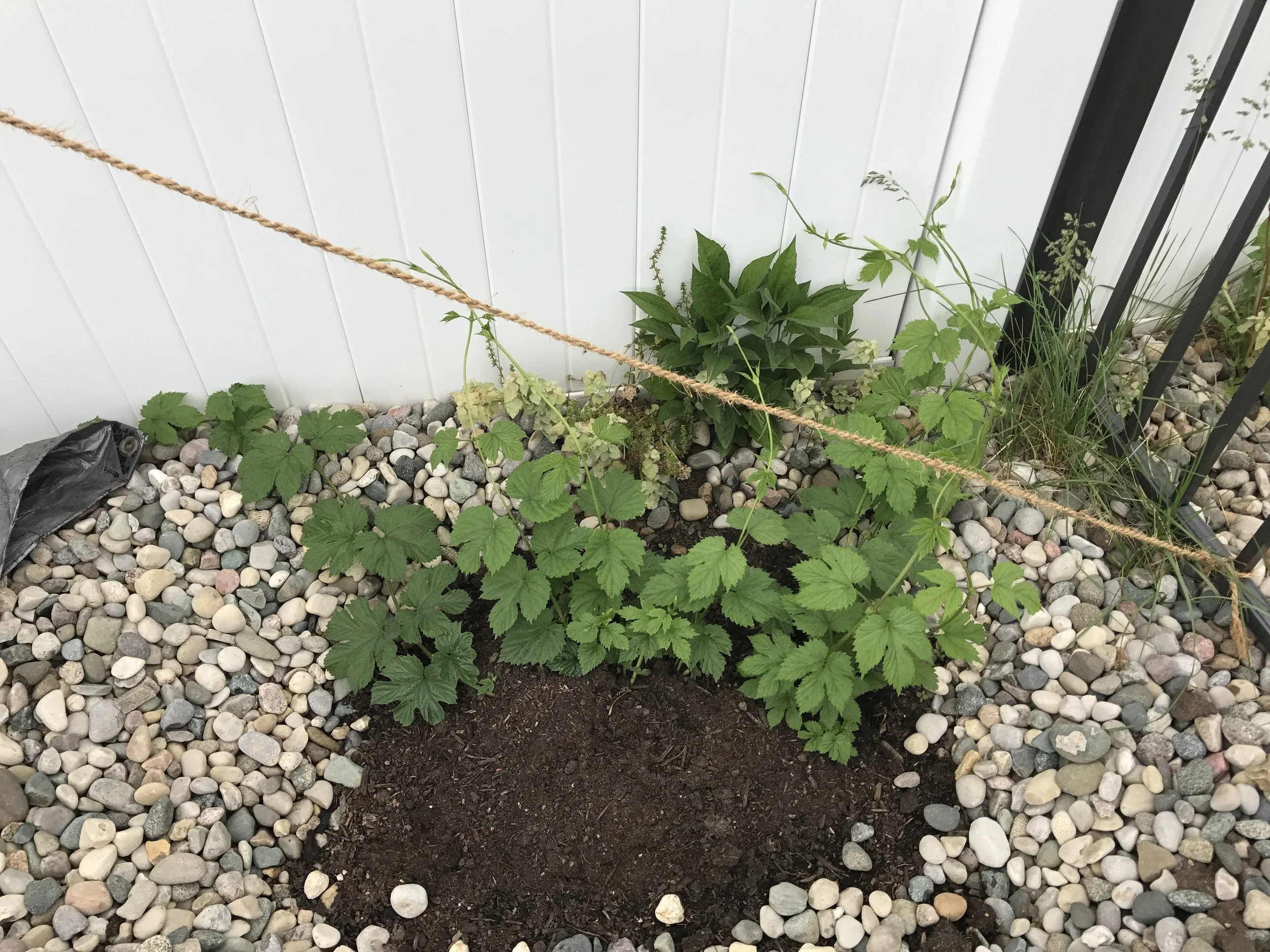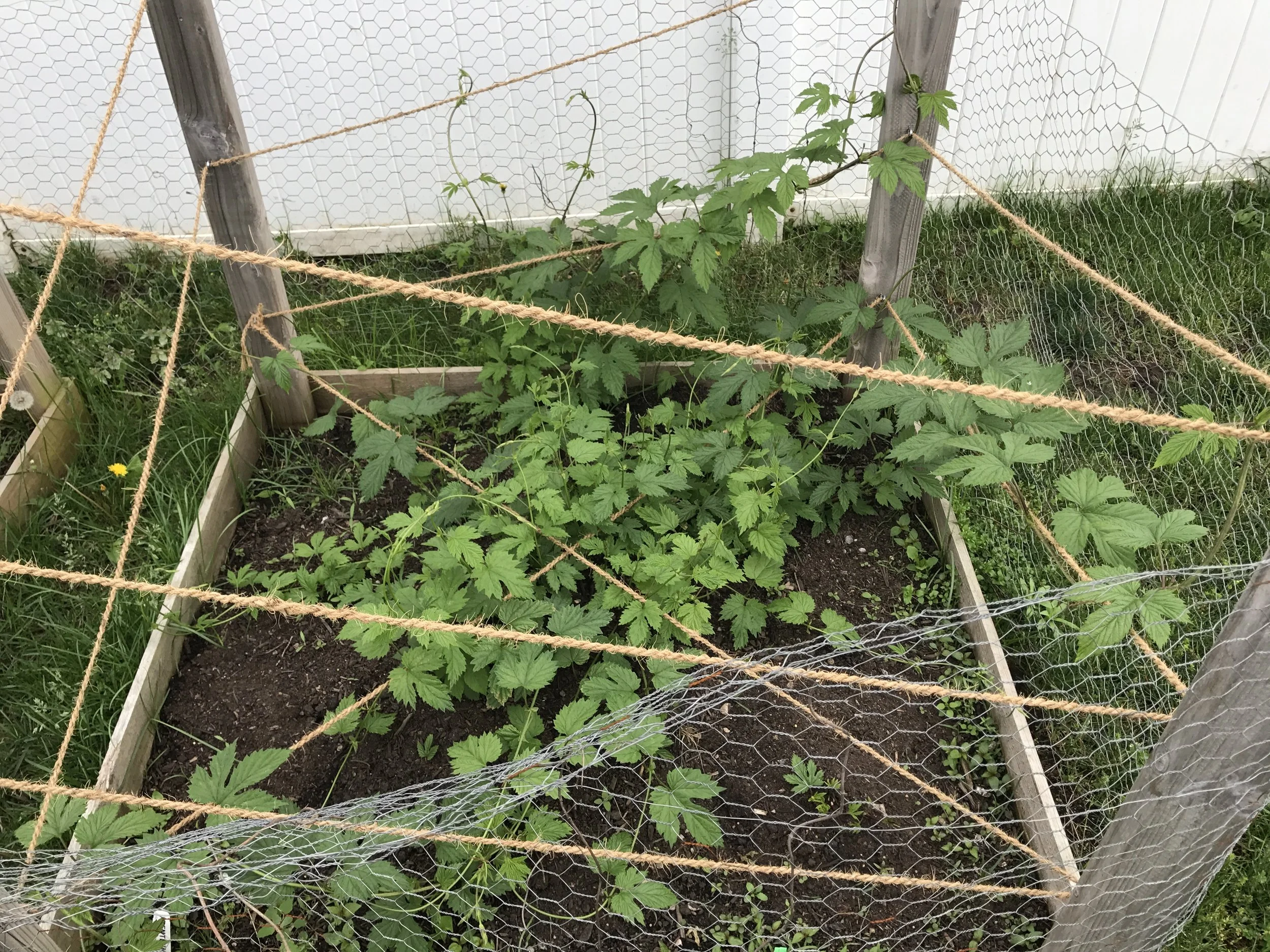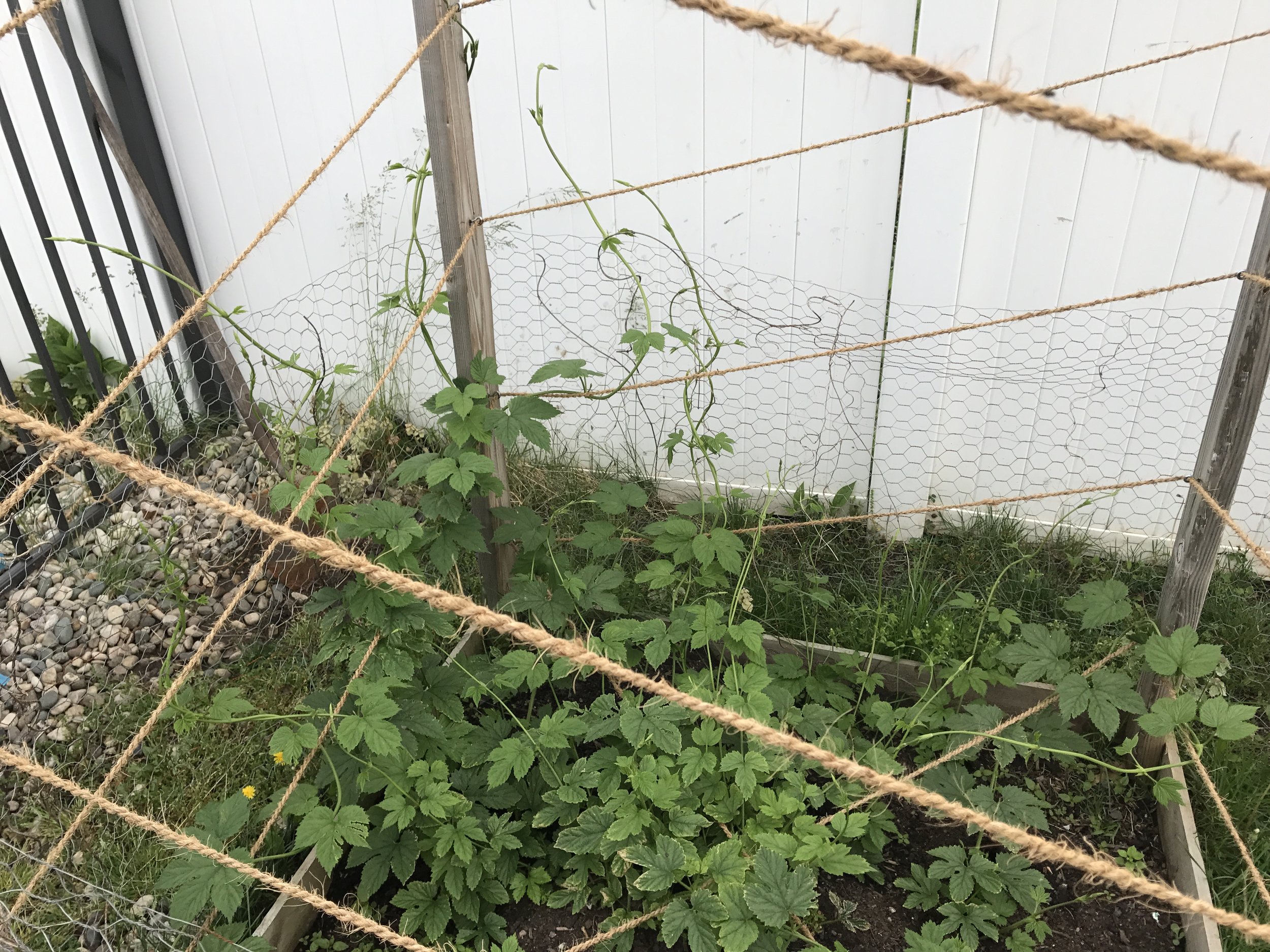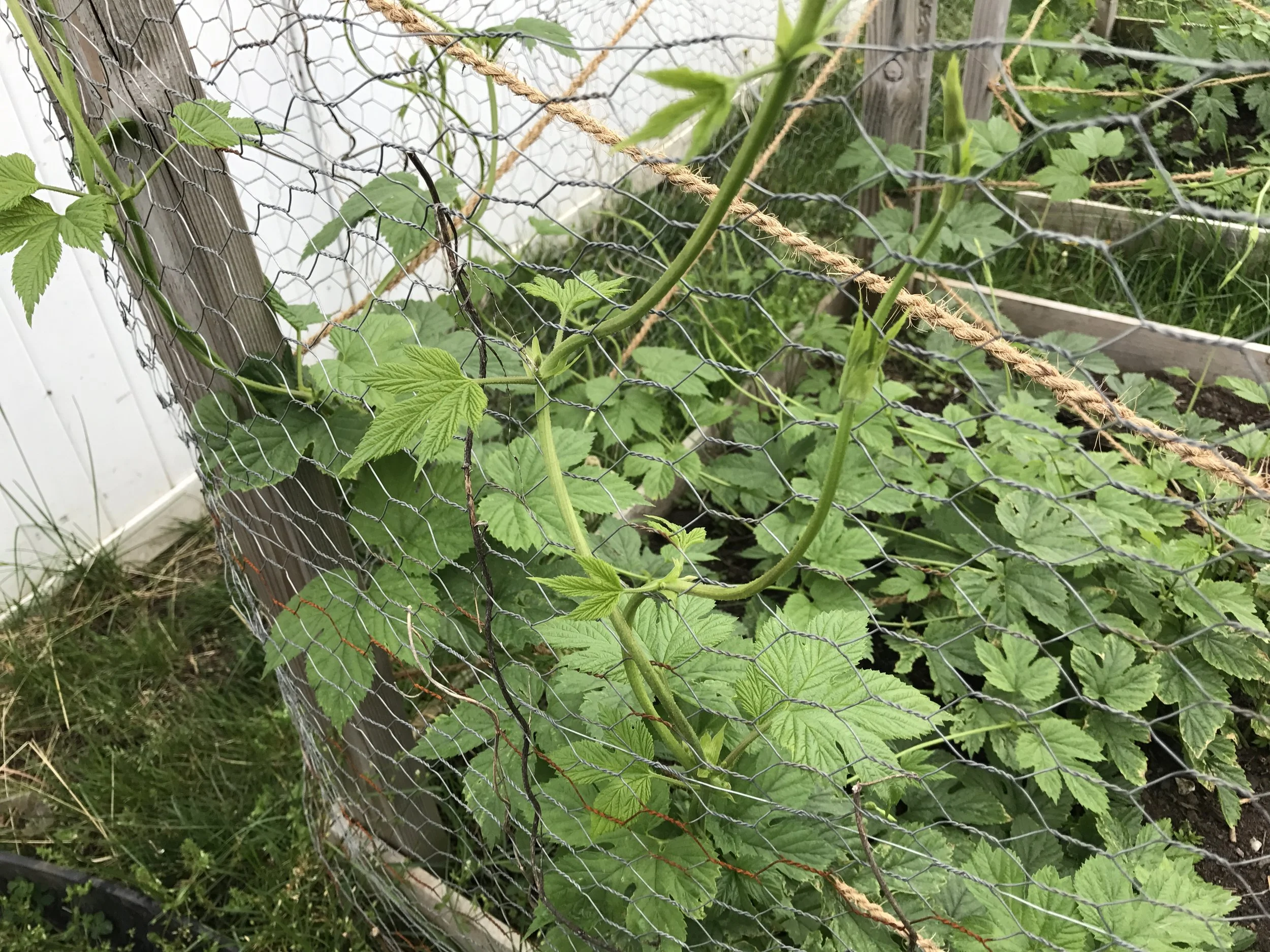Rhizome to Beer Part 2
Our hops should be showing some sign of life above ground now. We should now see bines that have broken through the soil. At this point in the young plant’s life we have some options that we need to look at.
Two options we have are to cut or let them be free. Just like in making beer you can search the internet and find different theories on if you should cut the bines back or let them grow. Some people say you should let 1st and 2nd year plants grow and you shouldn't cut them back because they say this will help establish a good root system. Others will say you should cut them back as they could be hollow and not produce the best cones. I will leave this part up to you to decide what you would like to do after all they are your hop plants. My 4 first year hop plants I cut 1 of the hop plants back to the ground and let the other 3 go. If you have 3 year or older hop plants I would keep cutting them back until the 1st of may.
Now that our hops are getting bines we need to look into a trellis system and twine that you will use. The bines can grow around 1’ each day and 30’ overall. As I talked about in part 1 your trellis can go straight up, it can go horizontal or it can go around in a box configuration. I have 2 in a box that are 4’ x 4’ and they go up 1’ for every 4’ across. You should start training your bines when they are 1-½’ tall on a nice sunny day (as they will be most pliable then) and train them clockwise around your twine. The end of your young bines are brittle so be careful not to break them off.
Before we talk about twine we need to talk about how many bines you should train. I'm sure if you look at your hop plants now you see 4+ bines above ground now. For 1st and 2nd year plants I would say train them all that you see come up in the first 2 weeks. After that 2 weeks is up cut all new bines back to the ground and continue to cut all others back that you see pop up. For more mature plants pick your best 4 cut the rest and run them up your twine.
We now need to get our twine going as our bines are going to need something to climb up soon. You want to select a good strong twine. We want to stay away from wire as the bines will have a hard time holding on to the wire. Jute twine is a good option as it is biodegradable and at the end of the hop season you can just compost the twine with the bines. You could use hay bail twine as this works well and is cheap. If you use manila rope ¼” should be all you need. This is an organic rope but is on the pricy side. Whatever you pick just make sure it can hold up your bines. If you can pull the twine and it breaks go to a bigger size or run double the twine. How you run your twine will depend on how you have your box planted. If you are using a box design you will want to start at the bottom and for every 4’ horizontal of run you want to go up 1’. I have built 2 boxes and on each 2x4 I drilled holes every foot up the 2x4. So I did this 4 times per box then put small eye screws in each one. The eye screw should be big enough to fit more than 1 run of twine in it.
Keeping our hops safe is should be one of your top priorities next to water and training. I did have to learn this the hard way. If any kind of animal can get to your hops they will. They will eat the ends of the hops off and they will pull them out. Chicken wire might be a good option to use, if you are using a box you can just put some nails into the wood then put the chicken wire on over that so you can open it if you need to pull weeds or hand water. If you use buckets or have them just in the ground you can use some short 2x4s to hold your chicken wire or other wire up. Just make sure bigger animals like deer and dogs can’t get to them.
Once the plant is 1’ tall you should add a full dose of fertilizer once a week, I use miracle grow. For my 4 hop plants that I have I put 1-½ tablespoons with 1 gallon of water and spread that equally on the 4 plants each Sunday. Once you start seeing seeing flowers stop all fertilizer. You should start seeing flowers by the end of June. At this point the hops will have all the fertilizer they need for the rest of the season. Your hops will use a lot of moisture to grow the bines. Make sure the soil around the plants is moist. If you are using a water can put the water around the base of the plant as much as you can. Also a good option is to add some composted manure mixed with some dirt or potting soil for some extra nutrients. I would add this at the end of June.
Don’t be afraid to take some notes for each hop plant you have. Some notes that you might want to write down for next year: When did you plant them, When did you see them break ground, how long did it take them to get 1 foot tall, when did you start fertilizer, when did you start seeing flowers, and when did you pick them.
I hope to see everyone back for part 3. In part 3 we will take a look at what we need to do when we see flowers and getting a recipe to use our fresh hops in.



